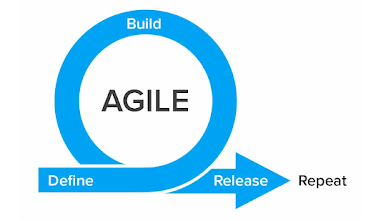How Agile Software Development Empowers Teams to Deliver High-Quality Products Faster
In today's fast-paced digital
world, businesses need to innovate quickly and efficiently to stay competitive.
Agile
software development has emerged as a powerful methodology that
empowers teams to deliver high-quality products faster, ensuring that
organizations can meet evolving market demands and customer expectations.
Here's how Agile achieves this:
1. Iterative Development
Agile emphasizes iterative
development, where projects are broken down into small, manageable units called
sprints. Each sprint typically lasts 1-4 weeks and results in a working product
increment. This approach allows teams to continuously improve and refine the
product based on real-time feedback, ensuring that the final product aligns
closely with user needs.
2. Enhanced Collaboration
Agile promotes cross-functional
collaboration among team members, including developers, testers, product
owners, and stakeholders. Daily stand-up meetings, sprint planning, and
retrospective sessions foster open communication and ensure everyone is aligned
on project goals. This collaborative environment leads to faster
problem-solving and a more cohesive development process.
3. Flexibility and
Adaptability
One of the core principles of
Agile is its flexibility. Agile teams can quickly adapt to changing
requirements, whether they arise from market shifts or customer feedback. This
adaptability minimizes the risk of project delays and cost overruns, allowing
teams to pivot and adjust their approach as needed.
4. Continuous Testing and
Quality Assurance
Agile incorporates continuous
testing and quality assurance throughout the development lifecycle. By
integrating automated testing and regular code reviews, Agile teams identify
and address issues early, ensuring a high-quality product. This proactive approach
to quality reduces the likelihood of bugs and errors in the final release.
5. Customer-Centric Approach
Agile places a strong emphasis on
customer satisfaction. Through regular interactions with stakeholders and
end-users, Agile teams gain valuable insights into customer preferences and
pain points. This customer-centric approach ensures that the final product
meets user expectations and delivers a superior user experience.
6. Faster Time-to-Market
The iterative nature of Agile,
combined with its emphasis on collaboration and flexibility, enables teams to
deliver working product increments more quickly. By prioritizing features based
on customer feedback and business value, Agile teams can focus on delivering
high-impact functionalities first, resulting in faster time-to-market.
7. Empowered Teams
Agile fosters a culture of
empowerment and accountability within development teams. Team members have the
autonomy to make decisions, experiment with new ideas, and take ownership of
their work. This empowerment leads to higher motivation, creativity, and
productivity, ultimately contributing to the delivery of high-quality products.
Conclusion
Agile
software development has revolutionized the way teams deliver products
by promoting a culture of collaboration, flexibility, and continuous
improvement. By adopting Agile methodologies, organizations can empower their
teams to deliver high-quality products faster, ensuring they remain competitive
in an ever-changing digital landscape.



Comments
Post a Comment